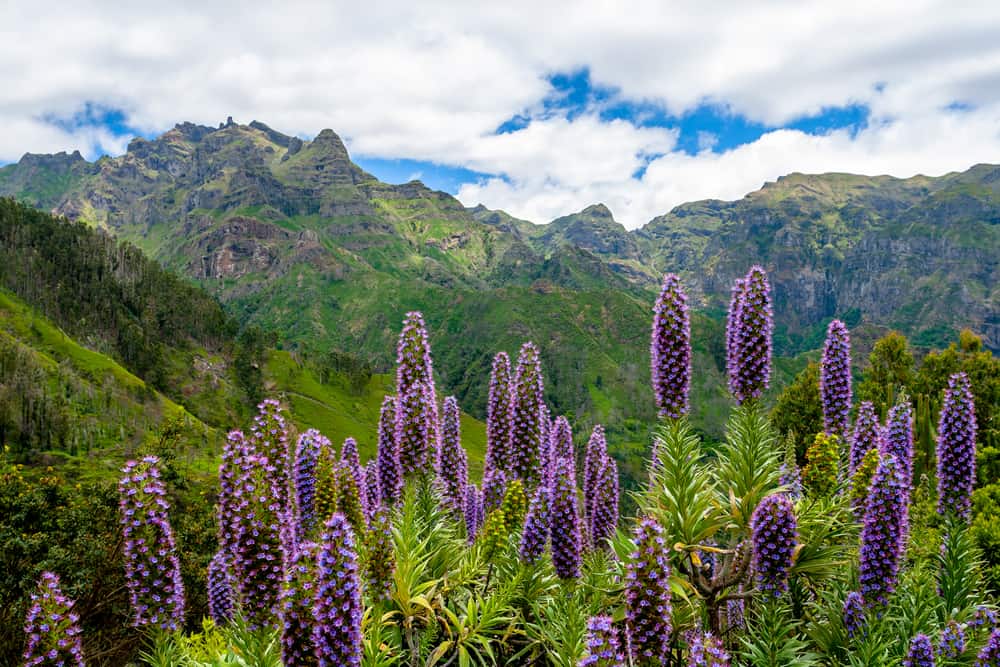Table of Contents
Imagine a plant that grows in a dense bush with long pointed stems completely filled with flowers adorning your backyard. This is exactly what Echium Bugloss has to offer to your garden. Their flowers have a vibrant blue colour with a delicate tint of pink in them. These beautiful flowers are like magnets for a lot of butterflies and pollinators.
Honey bees love to hover around Echium Bugloss as its blooms are always stocked with abundant nectar. Also known as Viper’s Bugloss, this plant keeps producing nectar all day, making your garden alive and kicking! We assume you must have an image of your garden decorated with bountiful Echium Bugloss already formed in your head.
Through this article, you will get to know everything that you will need actually to manifest that image. We will cover everything from how to plant it, which variety to plant, and how to take care of it.
Before that, let’s know more about this species closely.
Overview of Echium ‘Bugloss’
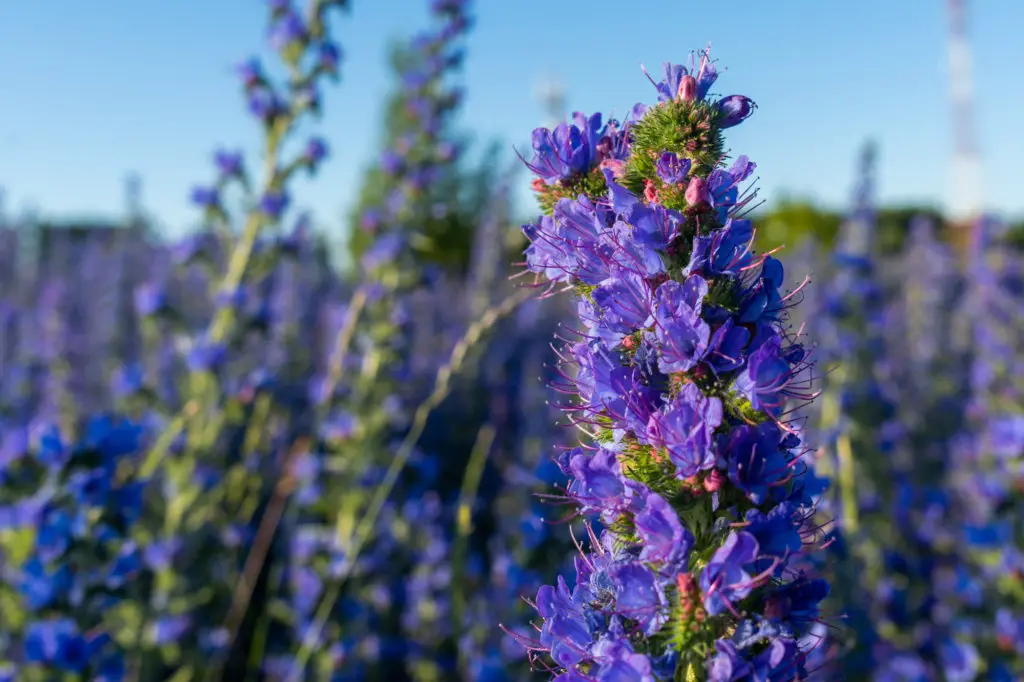
Echium Bugloss was given its name considering the shape of its leaves which resemble the long tongue of an Ox. The association of the name ‘Viper’ has taken inspiration from its spotted stem and the shape of its flowers that opens like a snake’s mouth. Even though its first recognition dates way back, it is now getting the popularity it deserves. Because of the changing climate and rising temperatures, many of the flowering plants are struggling to survive. In such a situation, Echiumscome to the rescue by preferring hot and dry conditions.
Plants belonging to Echium species are usually half perennials or biennials. But gardeners prefer it to grow as annuals as it is short-lived. Echium Bugloss is a hardy biennial, meaning they take a year to grow and eventually bears flowers in the second year. This wildflower is native to Europe and North Africa. Echium grows in unlikely hot and dry conditions that many flowering plants don’t prefer. They not only just tolerate extreme heat waves but, in fact, thrive in harsh summers. They grow up to a height of 75 cm with rough and hairy foliage that spreads around 50 cm.
How to Sow Echium ‘Bugloss’
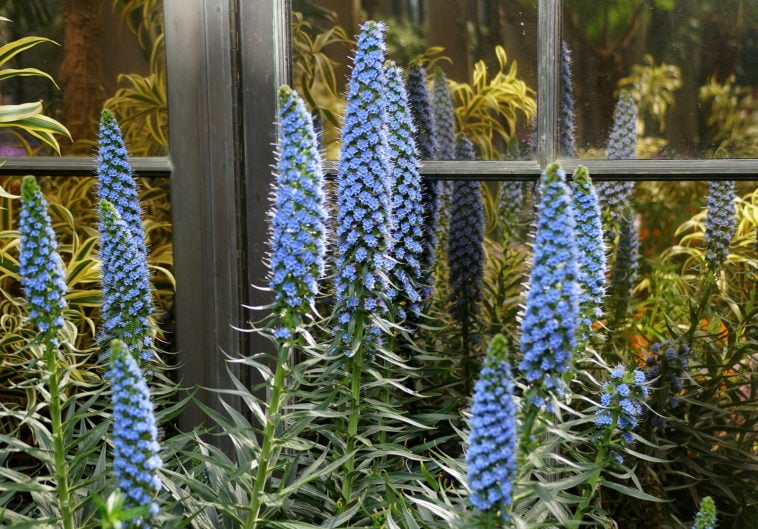
In well-drained soil, dig a hole with a depth of around 7mm in a sunny but shadowed area. If you wish to plant more than one Bugloss, keep a distance of about 30 to 40 cm between two holes so that the seedlings have enough space to expand. The seeds should be sowed in the holes during late spring or early summer. Echium can tolerate partial shade but flourishes best in full sun. Along with most soil that drains well, it also needs a relatively low pH, between 6.5 to 7, for ideal growth. You can measure the acidity of soil using the pH testing kit. Besides, it requires to be watered regularly and more frequently till the seedling roots appear. You might expect your seedling to emerge in 6 to 8 weeks.
In case you plant the seeds indoors, sow the seeds 6 to 7 weeks before you plan on shifting them outdoors. The seeds germinated in 1 to 3 weeks at a temperature of 15°C to 21 °C. Water the plant after it is transferred to the garden. Also, make sure the plant is outdoors till the middle of spring so that it gets enough sunlight. It is recommended to find a permanent spot for this plant as it may grow enormously, making it difficult to transplant later.
When to Water Echium ‘Bugloss’
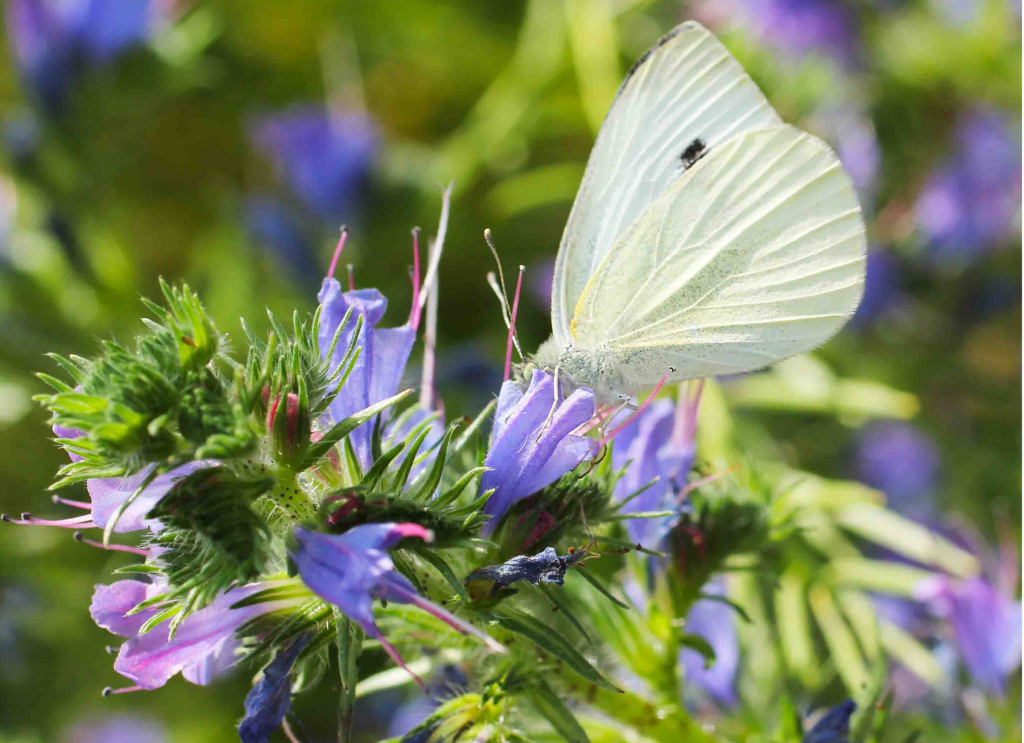
It is not necessary to water this plant frequently unless the weather is extremely hot. This plant is capable of surviving drought and thrives in dry conditions. So it needs just enough water to keep its soil moist and not wet. Echium can tolerate up to -5 degrees, but it can’t stand dampness. If you sow it indoors, make sure to use a container/pot that has appropriate drainage. Use pots that have holes in the bottoms that help excess water to get drained. Also, remember to water the sapling while transplanting it to the ground.
How to Care for Echium ‘Bugloss’
Bugloss is easy to take care of. They don’t need to be watered frequently unless it a long dry weather. They also scatter their seeds during summer, leading to self-seeding in well-drained soils. You can simply cut the flower towers to prevent them from developing seeds which might lead to undesirable growth. Deadheading can also help to prolong the flowering period. Shrubby Echiums need to be trimmed regularly so that they stay in shape.
These plants usually don’t catch diseases easily. But attacks from some kinds of pests can turn out harmful for them. You can detect a snail attack from the long lines of silver slime that they leave over. You can simply keep your plant away from snails by picking them up and disposing them far away. Caterpillars can also damage the plant by making holes and leaving trails on the leaves. To get rid of this, all you need to do is make the area of the plant attractive to birds by putting seed blends. The birds will take care of the caterpillars for you.
4 Varieties of Echium ‘Bugloss’
The Echium family has around 60 varieties that originate from different parts of Europe, Mediterranean areas, and some regions of Asia and North Africa. The varieties include perennials, biennials, and shrubs. Besides Bugloss, there are some other varieties of Echium that need similar weather conditions to grow. However, each type has something unique to offer to your garden.
The Royal Horticulture Society has honoured the different varieties of Echims with the prestigious Award of Garden Merit. Here’s a catalogue of other Echiums that might better suit your garden’s requirements.
1. Echium Pininana
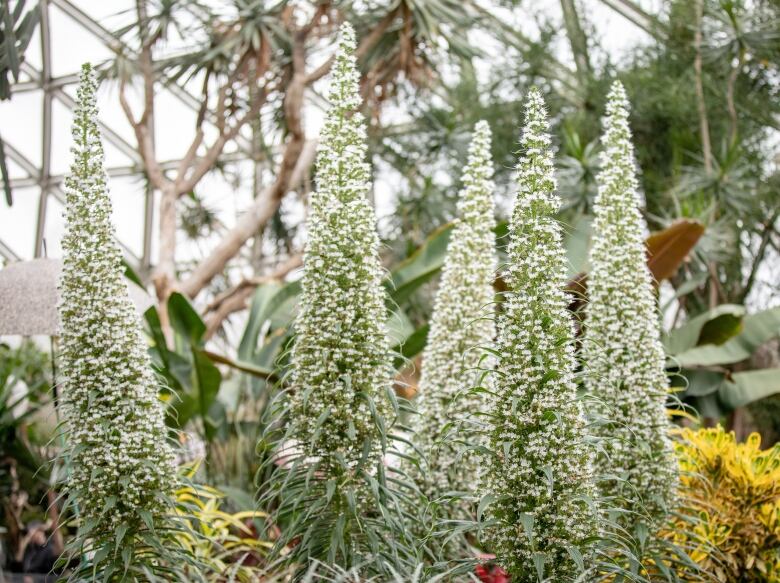
Also called Snow Tower, E. Pininana is the white variant of the Euchiam plant. It is a biennial plant with silver-grey leaves and spikes filled with white flowers. It requires cold weather with temperatures between 7°C and 10°C to thrive. Any soil that drains wells is ideal for the growth of Snow Tower. Growing up to a height of 1.8m, it adds an exotic element to the cold landscape of the UK. Being a biennial, it bears flowers in two years and then dies. Its seeds lay on grown and can be dormant for 7 years.
2. Echium Wildpretii
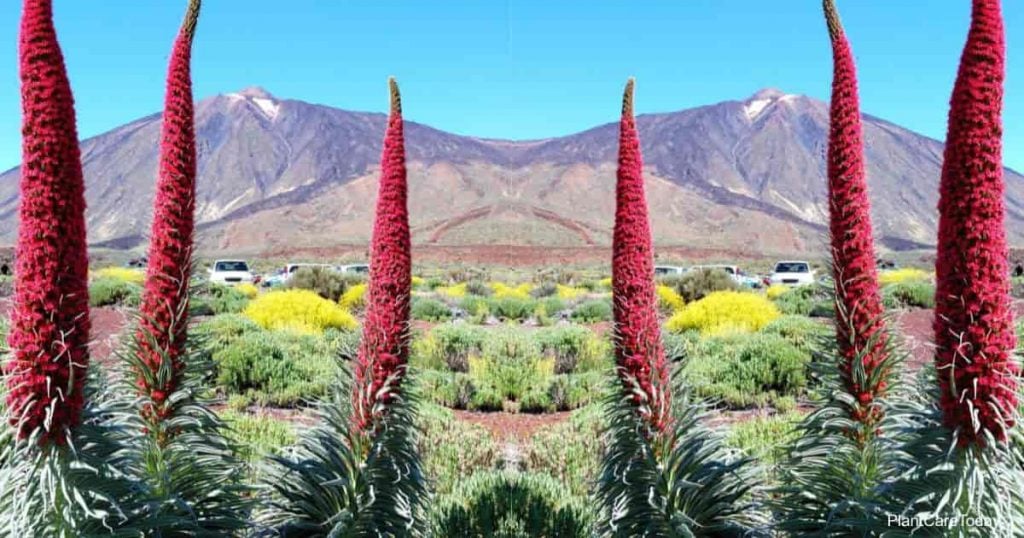
Most popularly found in the Canary Islands, Echium Wildpretti is an endemic plant that’s found in specific regions. It grows on rocky volcanic hills in the cool and dry summer season. It produces a silvery green thick rosette in the first year that grows into bright dark pink foliage in the following year. This plant can grow up to a height of 3m and requires arid and dry conditions to grow. It also requires a lot of sunlight and can bear up to -5 °C. Its deep red spikes add ornamental value to the landscape, especially in the gloomy weather of winter. The plant is also casually called ‘Tower of Jewels’, which gives a spot-on description of its dramatic element.
3. Echium Pink Fountain
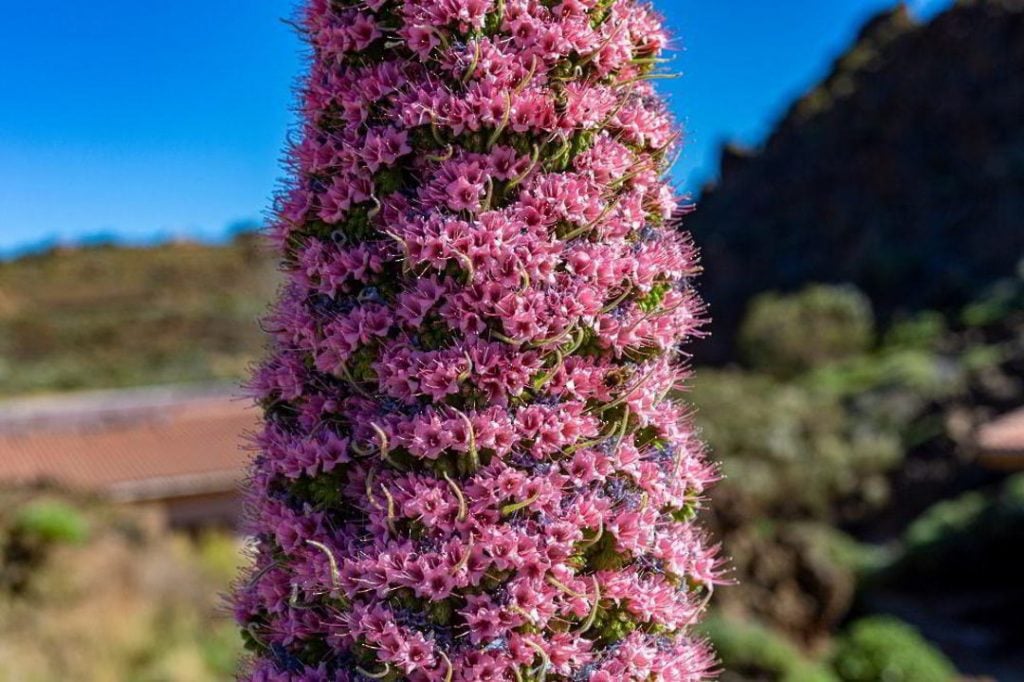
As the name suggests, this variation looks like a huge tapering pillar densely filled with elegant pink flowers. It is also a crossbreed of the red Echium Wildpretti and white Euhium Pininana. Pink Fountain grows in full sun and needs shading. It starts growing with greyish-green leaves that eventually turn into an enormous tower of shining pink flowers that grow up to a height of 2m. Its unique colour and structure have made it one of the most sought-after Echium. They are 35cm wide pink cylinders that narrow down in one end. Since this is a hybrid variant, it produces misfits occasionally.
4. Echium Blue Bedder
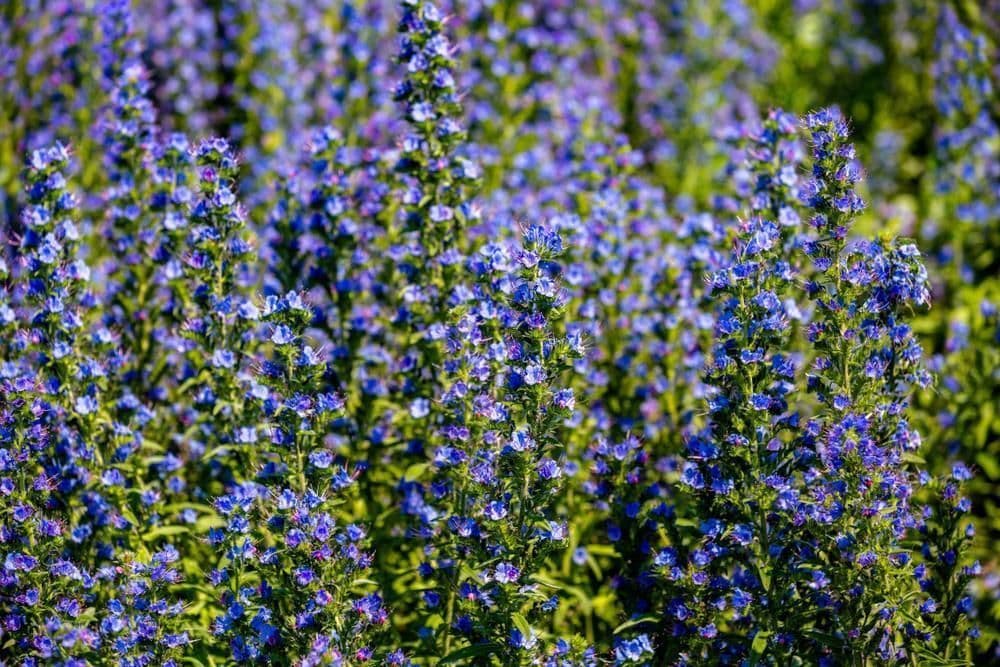
This species has a more compact growth than its counterparts. It has violet/purple-coloured cup-shaped flowers filling its narrow stems that flourish throughout the summers. It grows in more than one branch and behaves better than other species. It is best to be grown in grassy areas, mini meadows, and coastal beds. Blue Bedder is considered the dwarf twin of Viper bugloss which is taller and upright. They bloom all throughout the summer until frost. They are pleasant on the eye, easy to grow, and blooms vigorously.
Points to Remember
- While the growing conditions of all varieties are loosely similar, it is advised to know to follow specific instructions that apply to your species.
- All the Echiums need moderately fertile, well-drained soil. While they tolerate poorly fertile soils, it’s better to avoid highly fertile soil to prevent the uncontrolled growth of foliage.
- They have stiff pointy hair that can cause itchiness and redness when contacted with the skin. So cover your hands with gardening gloves while handling this plant.
- Echiums are toxic when consumed and can cause liver failure, abdominal pain, and nausea consequently.
- Some varieties of Echium might be invasive in some regions. For instance, Viper’s Bugloss is considered a poisonous weed in some western states, including Washington.
- It is recommended to check if a certain type of Echium is allowed to be planted in your area.
Conclusion
All in all, Echiums are unique and dazzling plants that can amp up the looks of your garden. They come in so wide varieties and colours that they give options to choose from. Irrespective of the size and style of your garden, you can easily find the variety that goes with the vibe of your garden. Besides, Euchims are extremely easy to take care of as they can sustain harsh weather conditions. They can also survive without/with very fewer amounts of water.
With very less to invest, Viper Bugloss can offer a lot of beauty and whimsy to your garden. They can be perfect for creating borders and adding vivid patches to your backyard. Echiums can be the perfect ornament that gives a landscape an extra edge. It also attracts enough butterflies and honey bees to enhance the beauty of your garden even further.
Though it is considered a noxious weed in a few regions, it is still popular in parts of Europe. I can confidently say that the colourful spiky heads of these plants are enough to catch the attention of visitors.
Comment which variety of Echiums did you like the most!

